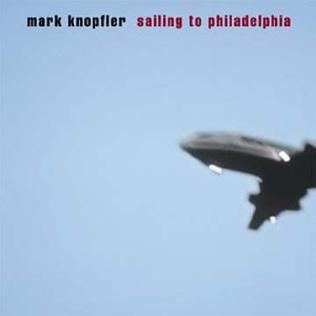Sailing to Philadelphia(2000) A Shot at Glory(2002) Release date 25 September 2000 | ||
 | ||
Released 26 September 2000 (2000-09-26) Recorded Ocean Way Studios,Tracking Room Studios,Nashville, 1998–2000 Length 60:11 (International)60:25 (USA) Nominations Echo Award for Best International Rock/Pop Male Artist Similar Mark Knopfler albums, Rock music albums | ||
Mark knopfler sailing to philadelphia full album
Sailing to Philadelphia is the second solo studio album by British singer-songwriter and guitarist Mark Knopfler, released on 26 September 2000 by Vertigo Records internationally, and by Warner Bros. Records in the United States. The album contains featured vocal performances by James Taylor and Van Morrison.
Contents
- Mark knopfler sailing to philadelphia full album
- Critical reception
- Touring
- Track listing
- Personnel
- What It Is
- Sailing to Philadelphia
- Silvertown Blues
- Songs
- References
The title track is drawn from Mason & Dixon by Thomas Pynchon, a novel about Charles Mason and Jeremiah Dixon, the two English surveyors who established the border between Pennsylvania and Maryland, Delaware, and Virginia in the 1760s. The border later became known as the Mason–Dixon line and has been used since the 1820s to denote the border between the Southern United States and the Northern United States.
Critical reception
In his review for AllMusic, William Ruhlmann gave the album three out of five stars, writing that "in one song after another on this album, you get the feeling that he started out playing some familiar song in a specific genre and eventually extrapolated upon it enough to call it an original." In his review for Rolling Stone magazine, David Wild gave the album three and a half out of five stars, writing that the album is "a welcome flashback" to Knopfler's earlier work with Dire Straits. Wild continued:
Knopfler duets with James Taylor on the title track, which deftly explores the relationship between Mason and Dixon; Van Morrison trades lines on the soulful "The Last Laugh." With Sailing to Philadelphia, Knopfler has taken a break from the rootsy side projects and soundtrack work that have occupied him for the last seventeen years, and has evoked some of the grandeur of prime Dire Straits.
By 2002, the album had sold more than 3.5 million copies worldwide. In some territories—Western Europe for example—the album was released as an HDCD and a 5.1 Surround Sound DVD-A.
Touring
In 2001, Knopfler supported the release of the album with his Sailing to Philadelphia Tour, which started on 27 March 2001 in Mexico City, Mexico, included 80 concerts in 68 cities, and ended on 31 July 2001 in Moscow, Russia. The tour consisted of three legs: Mexico and South America, North America, and Europe and Russia. The tour lineup included Mark Knopfler (guitar, vocals), Guy Fletcher (keyboards), Richard Bennett (guitar), Glenn Worf (bass), Chad Cromwell (drums), Geraint Watkins (piano, accordion), and Mike Henderson (guitar, mandolin, violin, harmonica).
The Madrid concert on 2 July 2001 was filmed but never released. The Toronto concert at Massey Hall in May 2001 was also recorded, but only three tracks were officially released: "Speedway at Nazareth" (the B-side of "Why Aye Man"), "Who's Your Baby Now" (the B-side of "Boom, Like That") and "Brothers in Arms" (available on a limited edition version of the album The Ragpicker's Dream).
Track listing
All songs were written by Mark Knopfler.
Personnel
What It Is
"What It Is" was the first single from the album. An extended version of the song released in Mexico contains an additional verse:
And the highwayman stands blowing on his fingers by the greenI've walked inside his shoes before so I always buy his magazineHe's with a local mystery with blood stains on her handsI like the way she winks at me but I leave her with the highwaymanThe instrumental portion of the song serves as the theme music for the CBC Radio One radio show, Dispatches.
All songs were written by Mark Knopfler.
Sailing to Philadelphia
"Sailing to Philadelphia" was the second single from the album. The song is a duet between Knopfler and American singer-songwriter James Taylor. The song is written in an autobiographical style, and is the story of Jeremiah Dixon and Charlie Mason, a "Geordie boy" and an astronomer, respectively, who sailed to America from the United Kingdom. Dixon (Mark Knopfler) predicted that there was a "land of opportunity" to the west, which Mason (James Taylor), the "stargazer" does not believe. Towards the end of the song, the lyrics suggest that Dixon was correct.
All songs were written by Mark Knopfler.
Silvertown Blues
"Silvertown Blues" was the third and final single from the album. It was released as a commercial single in the Netherlands and Belgium only, but it received radio airplay in several European countries, notably in France. The song was not performed live during the Sailing to Philadelphia Tour.
Silvertown is an industrial district on the north bank of the River Thames in London, and the song partially deals with the construction of the financially unsuccessful Millennium Dome. It was constructed on a site contaminated by toxic sludge from East Greenwich Gas Works that operated from 1889 to 1985.
From the poisonous drains a vision appearsNew circle of cranes, a new reason to be hereA big silver dome rising up into the dawnAbove the church and the homes where all the silver is goneAll songs were written by Mark Knopfler.
Songs
1What It Is4:57
2Sailing to Philadelphia5:30
3Who's Your Baby Now3:06
